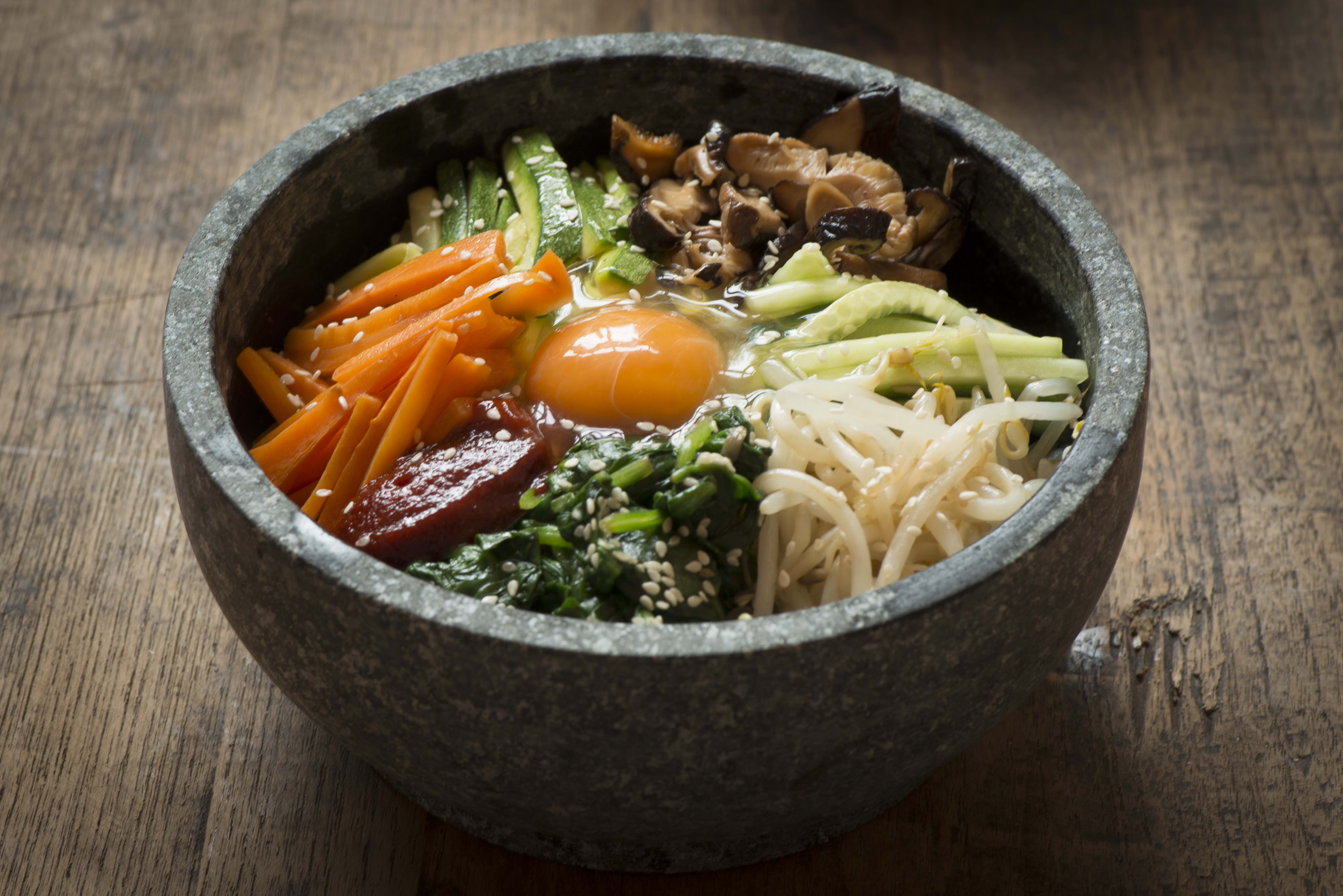 |
| wikimedia |
Bibimbap: A Harmonious Fusion of Ingredients and Cultures in Korean Cuisine
Bibimbap is a beloved Korean dish known for its colorful presentation and delicious combination of flavors. It consists of a bowl of steamed rice topped with an assortment of sautéed vegetables, sliced meat, a fried egg, and gochujang (spicy red pepper paste). Here's a recipe and guide to help you make bibimbap at home:
Ingredients:
- 2 cups cooked short-grain rice
- Assorted vegetables (carrots, spinach, mushrooms, zucchini, bean sprouts, etc.)
- 200g thinly sliced beef (can be substituted with chicken, pork, or tofu)
- 2-3 tablespoons vegetable oil
- 4 eggs
- Gochujang (Korean red pepper paste)
- Sesame oil
- Soy sauce
- Sesame seeds (for garnish)
- Salt and pepper (to taste)
Instructions:
1. Prepare the Vegetables:
- Julienne or thinly slice the vegetables. Blanch the bean sprouts and spinach in boiling water for a few seconds, then shock them in cold water to retain their vibrant color. Squeeze out excess water and season with a pinch of salt and sesame oil. Sauté the other vegetables with a little oil until tender-crisp. Season with salt and pepper.
2. Marinate the Meat:
- If using meat, marinate it in a mixture of soy sauce, sesame oil, minced garlic, and a pinch of sugar for about 20 minutes. Sauté the marinated meat in a hot pan until cooked through. Set aside.
3. Fry the Eggs:
- Heat a little oil in a non-stick pan and fry the eggs sunny-side-up or to your desired doneness. Season with salt and pepper.
4. Assemble the Bibimbap:
- Divide the cooked rice into individual serving bowls.
- Arrange the sautéed vegetables, cooked meat, and fried eggs on top of the rice in separate sections.
- Add a spoonful of gochujang to each bowl, or you can serve it on the side for diners to add according to their taste.
- Drizzle a little sesame oil over the ingredients and garnish with sesame seeds.
5. Mix and Enjoy:
- To eat bibimbap, take a spoon and mix all the ingredients together thoroughly, ensuring the gochujang is evenly distributed.
- Enjoy the bibimbap while it's still warm.
Bibimbap is a versatile dish, so feel free to customize it according to your preferences. You can add or substitute ingredients based on what you have available. Some variations include adding namul (seasoned vegetables), seaweed, or a dollop of savory doenjang (soybean paste) alongside gochujang.
Bibimbap is not only delicious but also visually appealing with its vibrant colors and textures. It's a fantastic dish to enjoy with family and friends, and it showcases the essence of Korean cuisine.




No comments:
Post a Comment